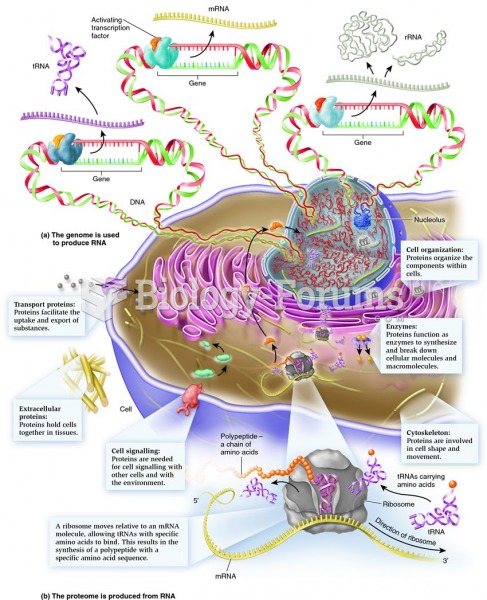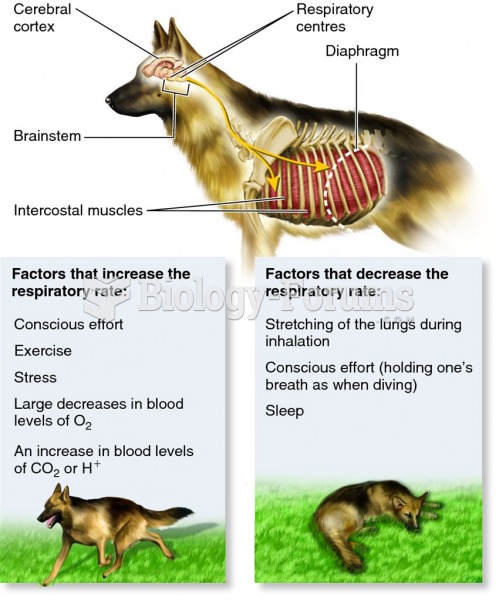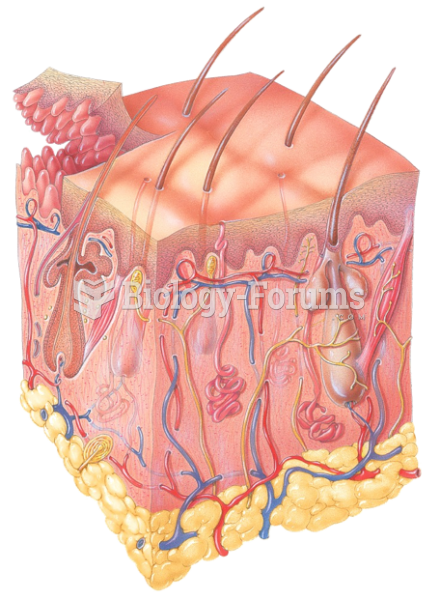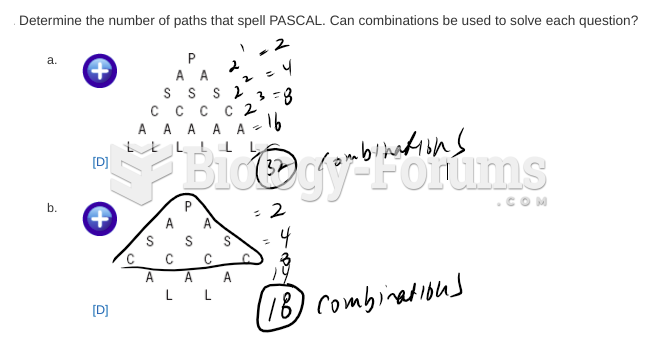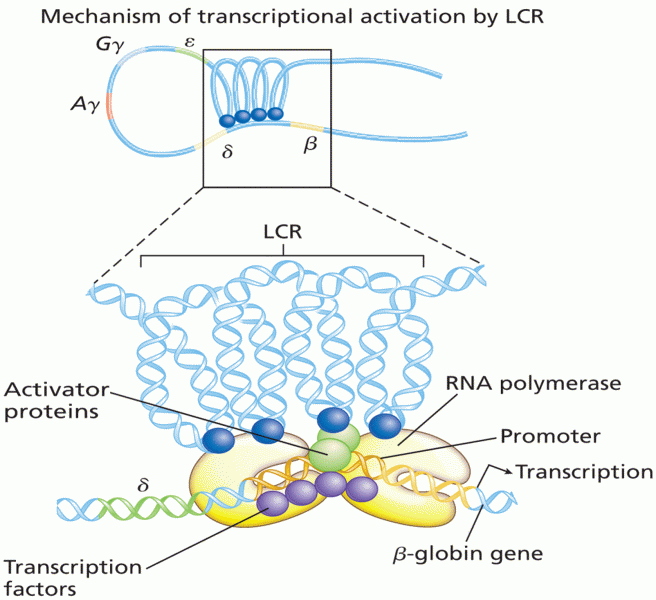|
|
|
Green tea is able to stop the scent of garlic or onion from causing bad breath.
Before a vaccine is licensed in the USA, the Food and Drug Administration (FDA) reviews it for safety and effectiveness. The CDC then reviews all studies again, as well as the American Academy of Pediatrics and the American Academy of Family Physicians. Every lot of vaccine is tested before administration to the public, and the FDA regularly inspects vaccine manufacturers' facilities.
Automated pill dispensing systems have alarms to alert patients when the correct dosing time has arrived. Most systems work with many varieties of medications, so patients who are taking a variety of drugs can still be in control of their dose regimen.
The first oncogene was discovered in 1970 and was termed SRC (pronounced "SARK").
About 100 new prescription or over-the-counter drugs come into the U.S. market every year.


